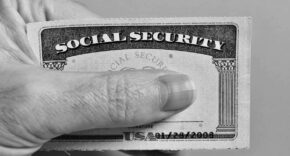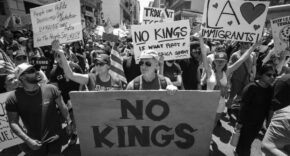Millions of student loan borrowers across the country are now closer to seeing their debt forgiven after President Donald Trump’s administration reached a new agreement with the American Federation of Teachers (AFT). This move brings back key student loan forgiveness programs that had been paused earlier this year, and it is being seen as a major step toward financial relief for working Americans.
“This is a tremendous win for borrowers,” said Winston Berkman-Breen, legal director for Protect Borrowers, the organization that represented the teachers’ union in the case. “With today’s filing, borrowers can rest a little easier.”
The agreement, which was filed in federal court on Friday, October 18, 2025, reinstates several income-driven repayment (IDR) plans that allow eligible borrowers to have their remaining student loan balances forgiven after making a required number of payments over time.
Why This Matters
Earlier in 2025, the Department of Education had temporarily stopped processing loan forgiveness for most borrowers using IDR plans. Officials said the pause was necessary because of a court order blocking the Biden-era Saving on a Valuable Education plan, known as SAVE. That court order affected the department’s systems and caused delays in handling all IDR-related discharges.
The Trump administration, however, worked to separate the blocked SAVE program from the other lawful repayment plans. According to a Department of Education spokesperson, “Thanks to the Trump administration’s efforts to separate out the illegal loan cancellation schemes, we are able to process legitimate loan cancellations once again for borrowers who have been making payments for the requisite number of years.”
This decision is part of a broader effort by the Trump White House to fix and streamline the student loan system, while still providing debt relief to those who have followed the rules and made consistent payments.
What Was Agreed To
Under the agreement, the administration will resume processing loan forgiveness for borrowers enrolled in the following repayment plans:
- Income-Contingent Repayment (ICR)
- Pay As You Earn (PAYE)
- Income-Based Repayment (IBR)
- Public Service Loan Forgiveness (PSLF)
These programs will remain active until July 1, 2028. After that date, they will be phased out as part of Trump’s “One Big Beautiful Bill,” a plan designed to simplify the federal student loan system and replace multiple repayment options with one unified plan.
A higher education expert, Mark Kantrowitz, estimated that more than 2.5 million borrowers are currently enrolled in the ICR and PAYE plans alone. The IBR plan, which was established in 2007, is believed to have around 2 million additional borrowers.
Borrowers must still meet the requirements of these programs in order to qualify for forgiveness. For most, this means making 20 to 25 years’ worth of payments, depending on the plan. That equals roughly 240 to 300 monthly payments.
The Lawsuit That Led to Forgiveness
The breakthrough came after the AFT filed a lawsuit against the Trump administration in March 2025. The union, which represents about 1.8 million members, accused officials of denying student loan forgiveness to borrowers who were eligible under the rules that were in effect when they first took out their loans.
AFT President Randi Weingarten praised the outcome, saying, “For nearly a decade, the AFT has fought for the rights of student loan borrowers to be freed from the shackles of unjust debt — and today, a huge part of that affordability fight was vindicated.”
She added, “This year, we took on the Trump administration when it refused to follow the law and denied borrowers the relief they were owed. Our agreement means that those borrowers stuck in limbo can either get immediate relief or finally see a light at the end of the tunnel.”
What About Taxes on Forgiven Loans?
One of the biggest concerns for borrowers has been whether they would be taxed on the amount of student debt that gets canceled. Under current tax law, forgiven student loans will begin to be treated as taxable income starting in 2026. This could lead to borrowers owing thousands of dollars to the IRS.
The new agreement addresses this issue. Borrowers who qualify for forgiveness before December 31, 2025, will not owe federal taxes on their canceled debt. Even if the government takes longer to process the cancellation, the Education Department will recognize the original eligibility date instead of the final processing date. This means that delays caused by the court order or government shutdown will not penalize borrowers.
Refunds and Additional Relief
In addition to restoring forgiveness programs, the Trump administration also agreed to provide refunds to borrowers who continued making payments after they had already qualified for cancellation. The government will also begin processing “buyback” applications for IDR and PSLF programs. These applications include borrowers who do not show a partial financial hardship, a condition that has been removed by Trump’s One Big Beautiful Bill.
These changes are expected to provide relief to thousands who were stuck making unnecessary payments because of confusion, technical issues, or blocked access to the programs.
SAVE Plan Borrowers Must Act
While the restored programs will help many, not all borrowers are automatically included. Those currently enrolled in the SAVE plan, which was created during the Biden administration, will not receive forgiveness unless they take action. They will need to transfer to one of the reinstated IDR plans to remain eligible for loan cancellation.
Brad Hershbein, a senior economist at the Upjohn Institute, explained the importance of understanding these changes. “If you’re in that plan, your debt will not be automatically forgiven,” he said. “You have to proactively transfer to one of the other income-driven repayment plans in order to qualify.”
Hershbein estimates that roughly 7.7 million borrowers are on the SAVE plan, with a total of $430 billion in student loan debt. In Michigan alone, around 400,000 people are affected. He warned that delays and confusion at the Department of Education, especially during the ongoing government shutdown, could make this transition more difficult.
“It’s unclear whether that’s going to happen automatically or if students are going to have to contact their lenders and apply for this,” he said.
What Happens Next?
The agreement is still awaiting court approval. If approved, the Department of Education will be required to file six monthly reports detailing the progress of loan forgiveness and application processing.
Borrowers should act now to confirm their eligibility and ensure they are in the correct repayment plan. They can log into StudentAid.gov to view their current loans, payment history, and repayment plan. Financial aid offices and loan servicers can also provide guidance.
Consumer advocates and economists agree that this decision by the Trump administration provides much-needed stability to a system that had been shaken by legal challenges and unclear policies.
Winston Berkman-Breen concluded, “The U.S. Department of Education has agreed to follow the law and deliver Congressionally mandated affordable payments and debt relief to hard-working public service workers across the country.”
A Step Toward Relief and Reform
By restoring legal forgiveness options, offering refunds, and protecting borrowers from unexpected tax bills, the Trump administration has taken a step that many see as both generous and necessary. While the system is still being reshaped, this agreement marks a turning point for borrowers who have waited years for the relief they were promised.
For now, as President Trump’s “One Big Beautiful Bill” moves toward simplifying repayment options in the future, millions of Americans can once again look forward to the possibility of life without student debt.





